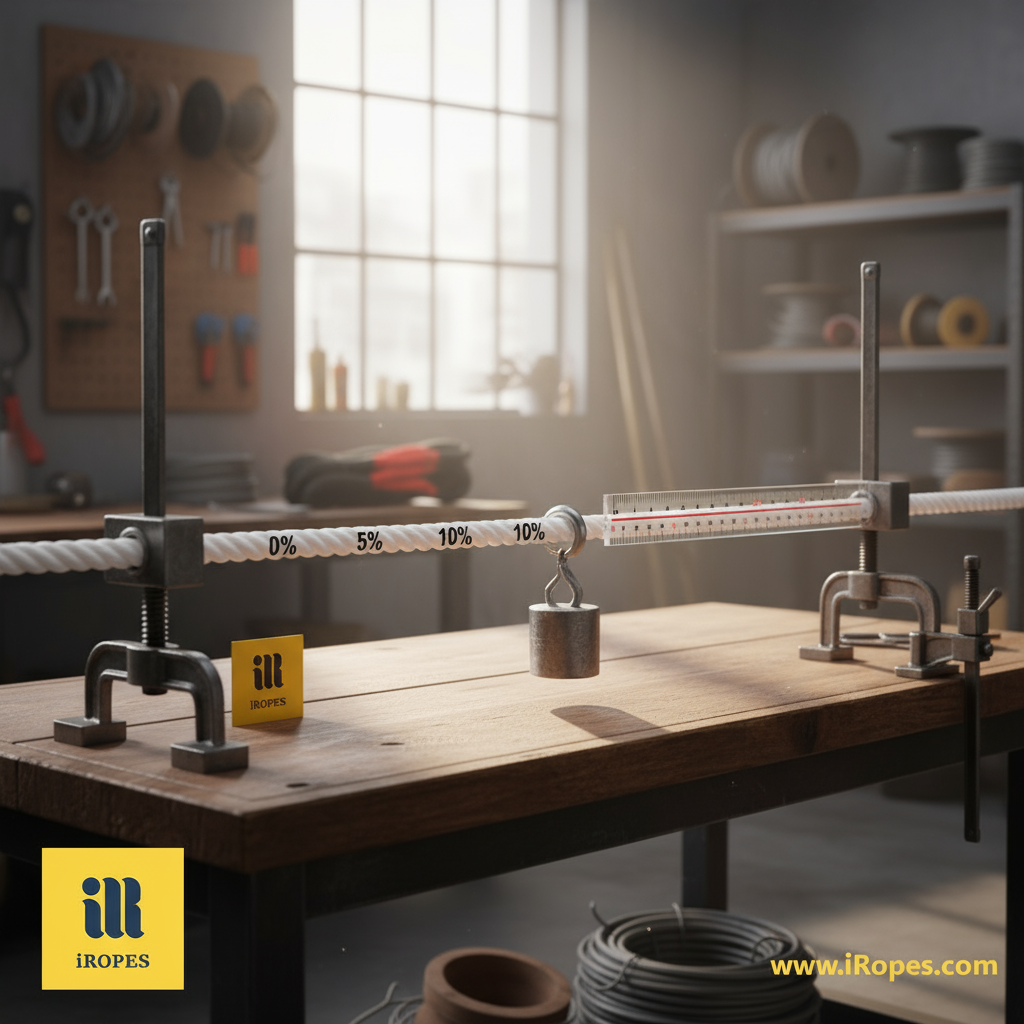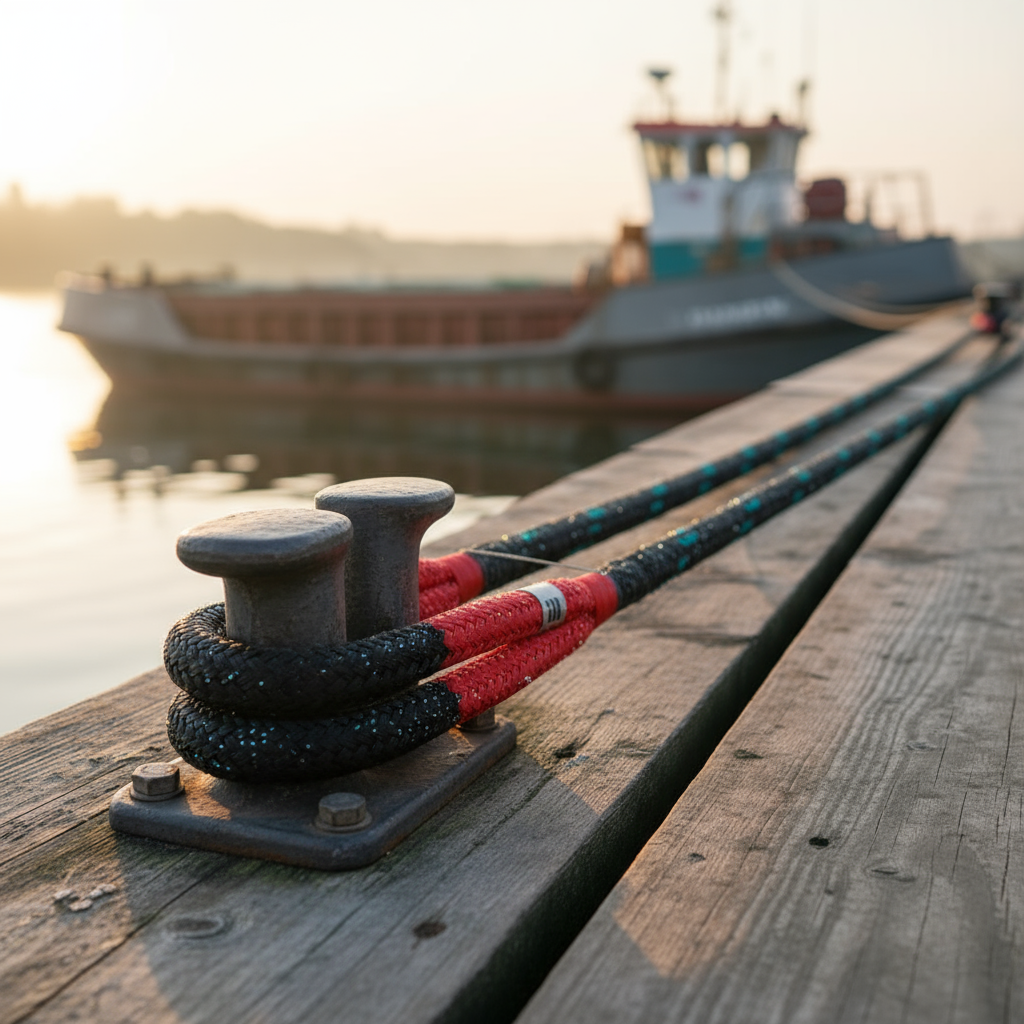Nylon rope stretches 15‑30% at break and up to 20% under working load, delivering up to 30% better shock absorption than low‑stretch fibres while fully recovering its length.
What you’ll gain – approx. 7 min read
- ✓ Up to 20% elastic elongation reduces peak impact forces by ~30%, extending hardware life.
- ✓ ISO 9001‑verified stretch consistency cuts warranty claims by ~12%.
- ✓ Custom diameter & strand count lets you dial‑in exact stretch % for any job, boosting safety compliance up to 25%.
- ✓ Wet‑strength loss limited to ~10%, still meeting critical safety factors.
You’ve probably heard that any rope ‘giving’ under load signals weakness. Yet, in dynamic‑load environments, that very 'give' keeps your crew and equipment safe. Imagine a mooring line that softens a wave‑induced snap, cutting impact forces by almost a third—that’s nylon’s stretch at work. In the sections below, we’ll reveal how iRopes engineers that elasticity into every custom strand, and why it’s the hidden advantage you’ve been missing.
Understanding rope stretch: definitions and measurement
Rope stretch describes how much a cord elongates when a load is applied. Technically, rope stretch refers to the elastic elongation a rope exhibits and can recover from. Permanent elongation, however, is known as creep and remains after the load is removed. Distinguishing these behaviours is essential for engineers designing safe, high‑performance systems.

Manufacturers quantify stretch in two common ways. Firstly, “percentage at break” records how far a rope extends at its ultimate breaking strength. Secondly, “working load elongation” measures the change in length when the rope carries its recommended safe load. Both metrics are expressed as a percentage of the original length, allowing designers to compare fibres directly.
For example, typical nylon rope stretch ranges from 15% to 30% at the breaking point, and can reach about 20% under normal working loads while still regaining its original length. This high elasticity is why nylon is favoured for mooring lines and towing applications where shock absorption is critical.
Understanding the true elasticity of a rope is the first step to ensuring safety in any high‑performance application, because it dictates how energy is absorbed and released during sudden loads.
Several variables influence how much a rope will stretch under a given load:
- Load magnitude - higher loads increase elongation proportionally.
- Diameter and length - thicker or shorter sections generally exhibit less stretch.
- Construction type - braided ropes behave differently from twisted strands.
- Moisture content - wet conditions can alter both strength and stretch response.
By recording both the break‑point percentage and the working‑load elongation, designers can select a rope that meets the required energy‑absorption profile without compromising safety. With these fundamentals clarified, the discussion can now shift to why nylon’s distinctive stretch makes it especially suited for dynamic load scenarios.
Nylon rope stretch: performance characteristics and benefits
When a load snaps into a line, the ability of the rope to elongate and then 'snap back' is what separates a smooth, controlled motion from a jarring shock. Nylon’s intrinsic elasticity provides a generous ‘give’ that converts sudden forces into manageable energy. This makes it the material of choice for many high‑performance scenarios.

In practice, nylon can elongate roughly one‑fifth of its length when a typical working load is applied. It also retains enough strength to rebound to its original size once the load is released. This high‑elastic recovery is why engineers often specify nylon for applications demanding shock‑absorption without permanent deformation.
- Mooring lines – the stretch cushions the impact of waves and wind gusts, protecting both vessel and dock.
- Towing ropes – a gradual elongation prevents sudden jerks that could damage a vehicle’s chassis or the tow winch.
- Recovery straps – the elastic ‘give’ allows a trapped machine to be lifted without snapping the strap or overloading the lifting point.
Beyond these scenarios, the same principle helps extend the service life of hardware. By spreading the load over a longer distance, nylon reduces peak stresses on shackles, cleats, and winches. This results in fewer premature failures and lower maintenance costs.
Tailored elasticity
iRopes engineers can fine‑tune nylon rope stretch by adjusting construction style, strand count, and diameter. This delivers a product that meets exact shock‑absorption requirements while staying within ISO‑9001 quality tolerances.
Understanding these performance traits clarifies why nylon rope stretch is celebrated in demanding environments. However, it also sets the stage for recognising the material’s trade‑offs when conditions shift toward prolonged static loading.
Nylon stretch rope: limitations and considerations
While the elastic ‘give’ of nylon rope makes it a favourite for dynamic loads, the same property can become a drawback when the line is expected to hold steady tension for long periods. Understanding these nuances helps you decide whether the high‑stretch characteristic truly serves your project.

Creep refers ...
Key disadvantages of nylon rope include: it does not float, it experiences creep under sustained loads, and its strength falls about 10% when wet. Additionally, high temperatures can soften the fibres, slightly increasing stretch.
Because nylon is denser than water...
Choosing the right material: comparison with polyester, polypropylene, and HMPE
Having examined nylon’s advantages and its drawbacks...

In a nutshell, polyester usually elongates ...
- Polyester – Low stretch - offers about 12‑15% elongation at break and excellent UV resistance, making it ideal for static rigging.
- Polypropylene – Floats - provides moderate stretch (15‑20%) and natural buoyancy, perfect for floating‑line buoys and light‑weight marine setups.
- HMPE/Kevlar – Minimal stretch - delivers less than 2% stretch while boasting ultra‑high tensile strength, suited for precision applications such as standing rigging or high‑load winch lines.
Polyester & Polypropylene
Balanced performance options
Low stretch
Polyester’s modest elongation keeps geometry stable under load, reducing sway in permanent installations.
Buoyancy
Polypropylene’s inherent floatation simplifies recovery and line handling in water‑based projects.
Cost‑effectiveness
Both fibres are budget‑friendly, allowing large‑scale deployments without sacrificing basic durability.
HMPE / Kevlar
Ultra‑high strength, near‑zero stretch
Precision
The almost non‑existent elongation guarantees exact positioning for high‑stakes rigging.
Strength‑to‑weight
HMPE’s tensile strength far exceeds its weight, ideal for long spans where mass matters.
Thermal stability
These fibres retain performance across a wide temperature range, reducing stretch variability.
iRopes leverages this material knowledge to engineer exactly the stretch you need. By selecting the appropriate construction—double‑braid, solid braid, or parallel core—adjusting diameter, and fine‑tuning strand count, we can achieve target elongation from the low‑stretch realm of polyester right up to the high‑elastic zone of nylon, all while staying within ISO‑9001 tolerances. Whether you require a rope that cushions a sudden pull or one that holds its length with surgical precision, our OEM/ODM capabilities ensure the final product matches your project’s performance envelope.
Throughout this article, you’ve seen how nylon’s high elongation rate, superior strength, and excellent rebound performance make it the go‑to fibre for dynamic, mooring, and power‑line applications. iRopes’ ISO‑9001‑certified ropes deliver impressive nylon rope stretch. Our OEM/ODM capabilities also allow you to fine‑tune construction, diameter, and strand count to achieve the precise nylon stretch rope profile you need. This commitment has earned excellent feedback from international brand clients, positioning iRopes as a trusted rope manufacturer dedicated to high‑quality products and services.
Request your customised nylon rope solution
For personalised guidance, simply complete the enquiry form above. Our specialists will help you translate these advantages into a rope stretch specification that matches your project perfectly.